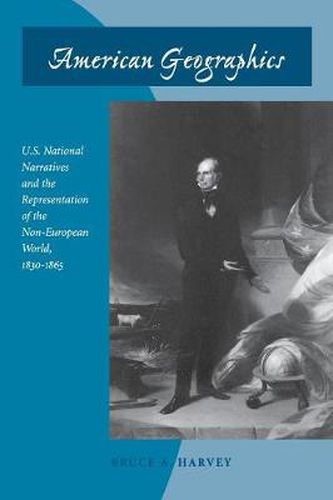Readings Newsletter
Become a Readings Member to make your shopping experience even easier.
Sign in or sign up for free!
You’re not far away from qualifying for FREE standard shipping within Australia
You’ve qualified for FREE standard shipping within Australia
The cart is loading…






This book is the first comprehensive study of antebellum depictions of the non-European world. Drawing on well-known works and archival discoveries, both artistic and textual, it proposes that U.S. cultural history cannot be fully understood unless we take into account how Americans regarded tropical America, the Holy Land, Polynesia, and Africa. The author first analyzes American geographical textbooks, arguing that through their hierarchical, racialized representations of the world s geobodies the American nation became embodied, was able to see itself on a global stage ushering the world into futurity. These textbooks did not just reflect normative, white bourgeois values; they produced those values daily in schools. Balancing psychological and cultural exegesis, the chapters that follow present case studies about U.S. travelers to non-European lands, in which the otherwise lofty geographic gaze became vexed by immersion in actual locales. A variety of issues and ideologies were thereby mediated, contested, or brought into focus: natural legalism (via Polynesia), the Protestant quest for scriptural luminosity (via the Holy Land), the fear of racial hybridity (via tropical America), and the question of African American agency (via Cuba and Africa).
$9.00 standard shipping within Australia
FREE standard shipping within Australia for orders over $100.00
Express & International shipping calculated at checkout
This book is the first comprehensive study of antebellum depictions of the non-European world. Drawing on well-known works and archival discoveries, both artistic and textual, it proposes that U.S. cultural history cannot be fully understood unless we take into account how Americans regarded tropical America, the Holy Land, Polynesia, and Africa. The author first analyzes American geographical textbooks, arguing that through their hierarchical, racialized representations of the world s geobodies the American nation became embodied, was able to see itself on a global stage ushering the world into futurity. These textbooks did not just reflect normative, white bourgeois values; they produced those values daily in schools. Balancing psychological and cultural exegesis, the chapters that follow present case studies about U.S. travelers to non-European lands, in which the otherwise lofty geographic gaze became vexed by immersion in actual locales. A variety of issues and ideologies were thereby mediated, contested, or brought into focus: natural legalism (via Polynesia), the Protestant quest for scriptural luminosity (via the Holy Land), the fear of racial hybridity (via tropical America), and the question of African American agency (via Cuba and Africa).